Delta President Glen Hauenstein says the airline has a moat – United can’t really catch up to them – because airlines are expensive, capital-intensive businesses with large workforces and heavily regulated and they’ve been working on the building blocks of their business for 15 years. They’re years ahead of United’s journey. American, in some ways, is just getting started on theirs (and we don’t yet know how committed they are to it).
Many of Delta’s building blocks were put in place by their last CEO, Richard Anderson, who came on Airlines Confidential this week for a conversation with retired Wall Street Journal airline reporter Scott McCartney and ex-American Airlines CEO Doug Parker.
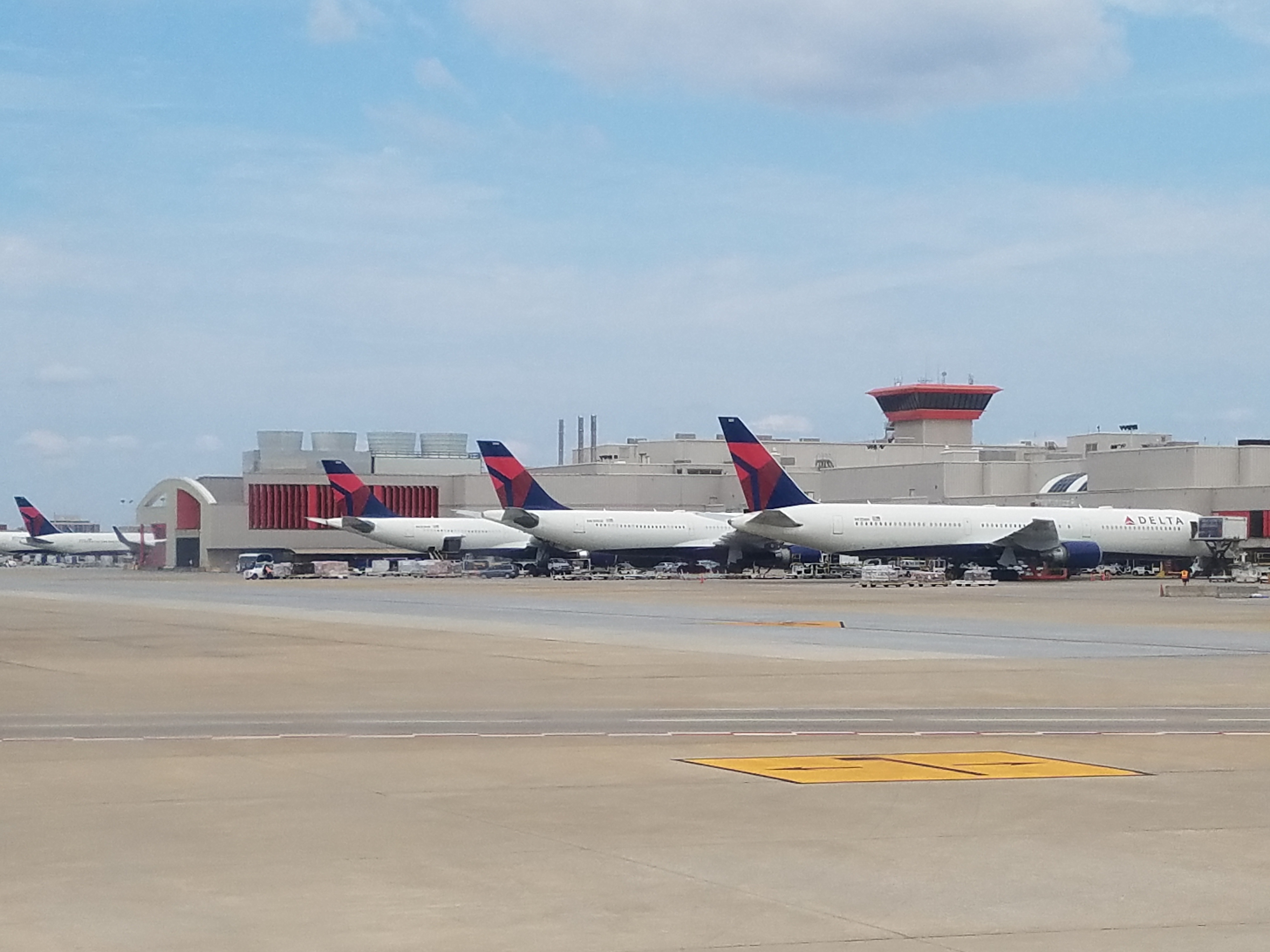
The Delta strategy began with reliability. But reliability meant more than just on-time planes – it meant getting each customer (and their bags) where they expected to go according to the itinerary they’d purchased. And it started with a basic product that delivered what they believed customers valued most. This is an interesting roadmap – because it aligns also, in a way, with how Gordon Bethune lays out what he did taking over a troubled Continental… stop the spinning, define the baseline product.
Anderson describes that Delta actually built their reliability on old planes,
[I]n 96, [CEO John] Dasburg slowly, starting in 94 kept moving me into operations and so my background was maintenance engineering and operations, not law anymore. And so I always thought that if you could have just the right amount of capital, to invest in the fleet, and I don’t mean buying airplanes. I mean, actually, in my view, I’d rather have older airplanes than newer airplanes.
My experience over time is new airplanes broke a lot more than old airplanes, because at least with old airplanes, you’d had enough time to be able to fix the system problems and the operating problems, and all your employees were completely familiar with those airplanes. And this is the only industry in the world where you buy a piece of equipment for $60 million, and it’s your fault if it breaks. And so I just knew that if we solved the scale and scope problem with consolidation, and we got our costs in line, then we could build a product, a base product. I mean a product we built at Delta was really foundational at Northwest. It’s just we never had the capital or the wherewithal to be able to do it, but we had that vision. And so once we got to Northwest and Delta together, and we had the network, and we had the cost structure, and we had enough capital, then you could go about building a business, a consumer business.
[Y]ou could go about, from a maintenance and engineering standpoint, build an incredibly reliable operation.
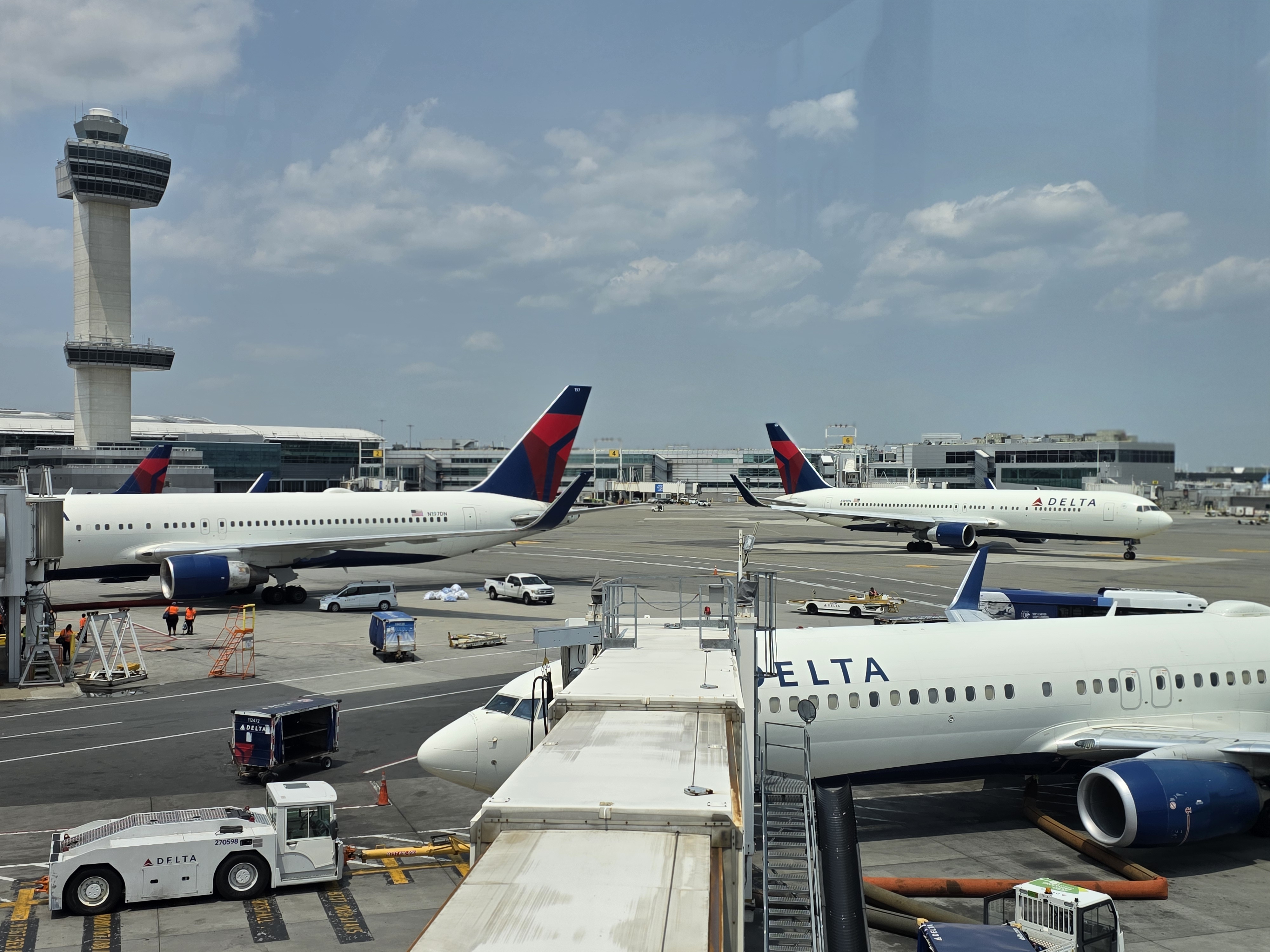
They started with reliability, seat back video, and wifi and that was the Delta product that they layered on top of from there.
Doug, you may remember those meetings we had back at Northwest, where Dasburg was always trying to find the base definition of the product. And he’d always say, safe, clean, on time, with bags, and courteous service. It’s a pretty fundamental equation of product, but it’s really hard to do.
We set about doing it and had a lot of really good people in the operation that, candidly, I’d grown up with over the years at Northwest, and I brought them all to Delta. There were a lot of good people at Delta and we brought in a lot of other good people and we just kind of set about one step at a time, building an operation where we didn’t cancel flights and we ran on time and all the toilets worked and the interiors were well maintained and the airplanes all painted the same color. ran a schedule for convenience of the passengers.
So it didn’t have a lot of frills. I would say the one frill we did do was Delta had a big investment in seat back video and we were thinking at Northwest that we should have individual seat back video. And so we did make that, we made that investment, we made the SkyPriority investment, and we got GoGo to put Wi-Fi on the airplanes for essentially free. And that was basically the product.
If we could deliver that product to every passenger every day on every flight, we figured we’d get a revenue premium. When I started at Delta, we had a revenue deficit per RASM, the industry RASM. We were about 15% behind because Delta had let a lot of consultants make a lot of decisions about product and pricing. and they had been flying song around. It was not a good situation. And so we were at a 15% unit revenue deficit. And when I retired, we were plus 18.
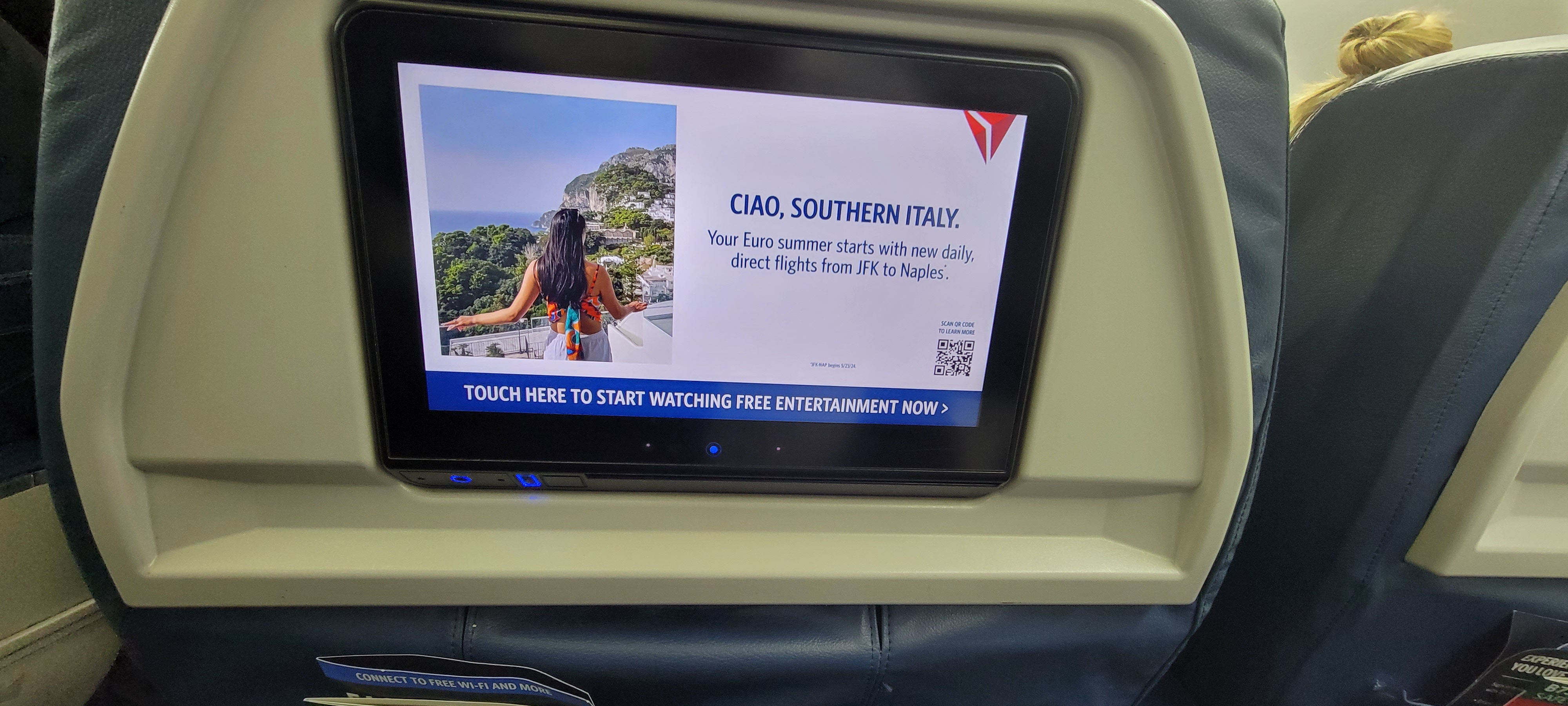
To gain reliability they decided to prioritize investing in line maintenance. (Eventually maintenance became a profit center for Delta, selling services not just servicing their own aircraft.)
I used to always say every person at Delta Airlines knows where to spend $10,000 of capital and hire two more people. Well, if we did that, we’d be bankrupt, right? We can’t triple the employment of the airline. So you’ve got to allocate your resources and using the resource allocation to technical operations and the operation was really important. And you’d be surprised how often you just understood where constraints were in the operations. And I remember the biggest constraint, the biggest discovery we had was we were too cheap on line maintenance stations.
One of the keys to running a really reliable operation is a lot of line maintenance. Line maintenance stations don’t cost a lot. But when an airplane sits overnight, if you got the capture rate on a fleet up over 40% where it went to maintenance, you caught 40 to 45% of a fleet every night in maintenance, its reliability would go up when its MELs went down. So we just did a lot of that kind of work.
And Gorman, Steve Gorman, and Gil West and Bill Lynch, Mike Moore, there was just a crew of people that understood this and knew how to how to drive the performance of the airline through maintenance and engineering.
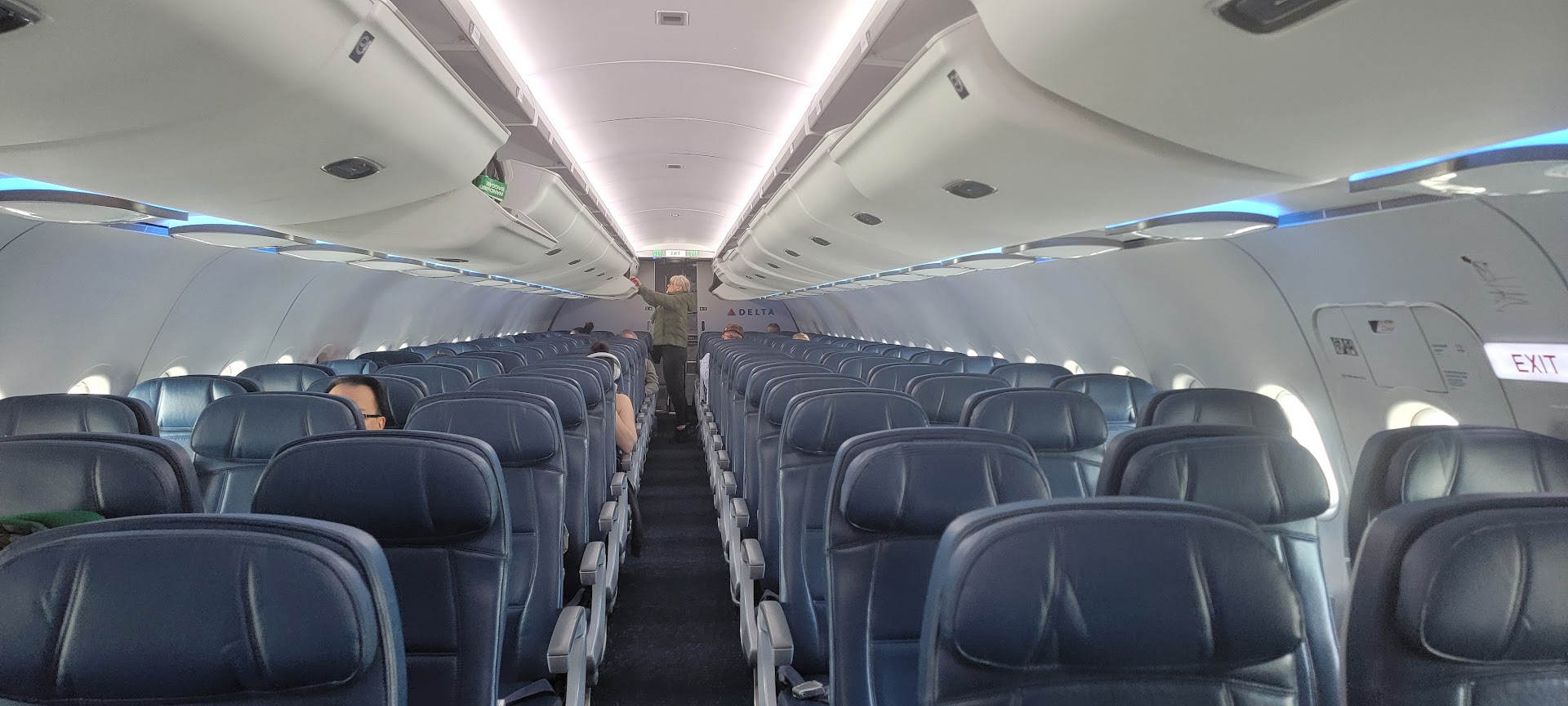
They got rid of involuntary denied boardings, although I don’t think this story is complete without the United Airlines David Dao passenger-dragging incident, which prompted the airline to raise involuntary denied boarding compensation.
Delta still has no denied boardings, okay? And I remember the conversations about that. Our denied boarding numbers were really high. And I said, OK, let me get this straight. A person goes on our website and buys a ticket. They pay us right away. They do everything we tell them to do. They show up at the airport on time. They pay for parking. They check their bags. They get to the gate area. And then we tell them, well, the airplane’s there, but we’re not going to take you. is think about that. And I said, why are we doing that? Why don’t we just stop that? And they said, well, that’ll be too expensive.
And I said, well, it’s a lot more expensive to your brand to tell that person did everything right that they’re not going to get to go. I said, why don’t we just buy them all off? It actually ended up kind of paying for itself because the yield management system is constrained by denied boardings. Doug, you remember that, the RM systems, the demand forecaster. If the demand forecaster is relatively unconstrained, you’ll actually go out with more seats booked. And so over time, and the cost of denied boarding is contra revenue. It’s not an expense item. So anyway, I remember we had a long conversation about that, and I said, you know, who wants to go over to the gate and tell half a dozen people that did everything right that they don’t get to go today? And so that’s how we ended up with no denied boardings.
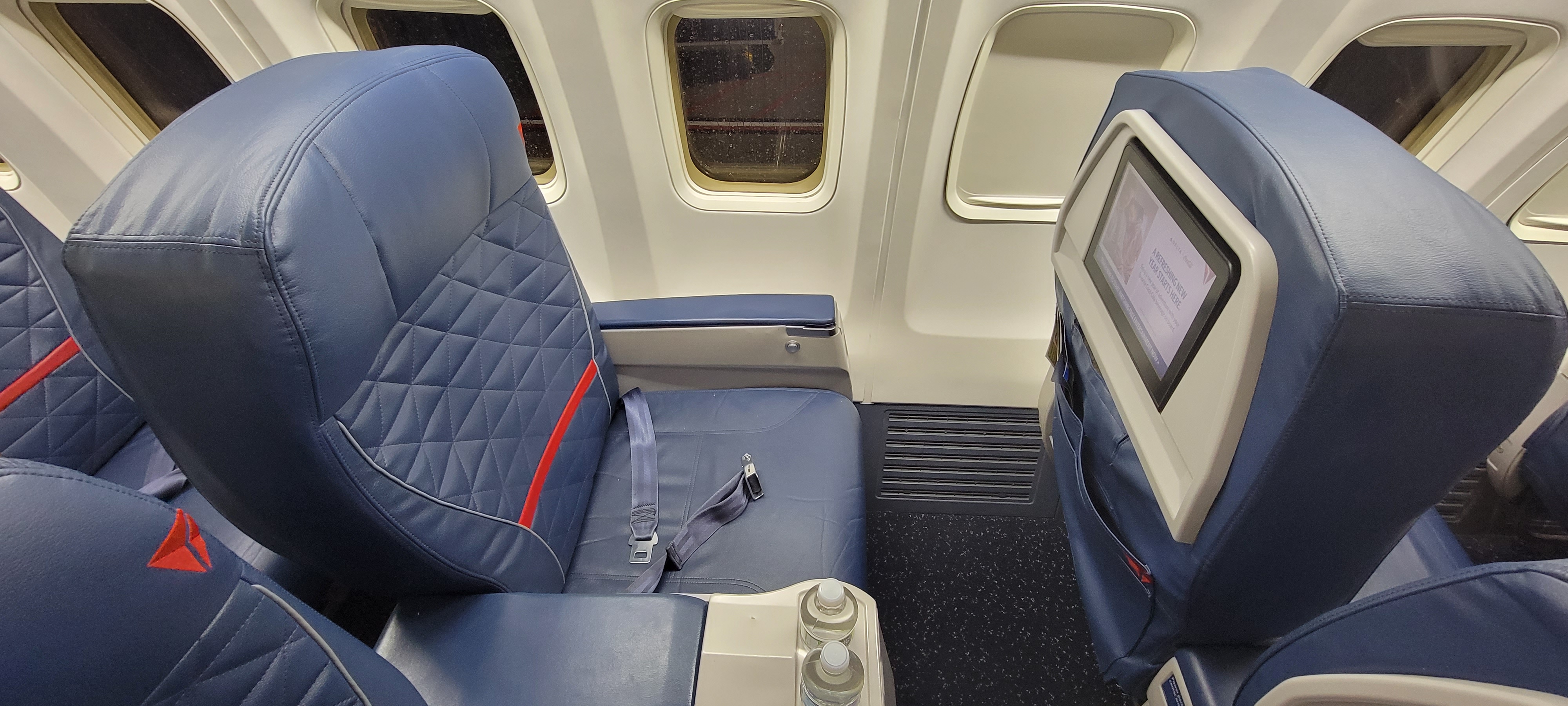
Richard Anderson has been gone from Delta for 9 years. He was rumored to have retired under pressure. He had hard edges, and gave way to much ‘softer’ Ed Bastian. He quickly went on to run Amtrak, where he ran into major opposition from unions and some members of Congress as he tried to reshape government trains to make them more efficient. He’s also free to share a lot now that he never could and that makes for some interesting lessons I think that other carriers trying to follow Delta’s playbook can learn from.
And notice that nowhere here is a discussion of Delta’s low-value loyalty program. They were able to sustain low value to consumers because of strengths elsewhere, and still generate substantial revenue from SkyMiles. Other airlines made the mistake of following the low value SkyMiles model, thinking that somehow translated into success along other dimensions. That was just weird. And you can see that wasn’t the formula.
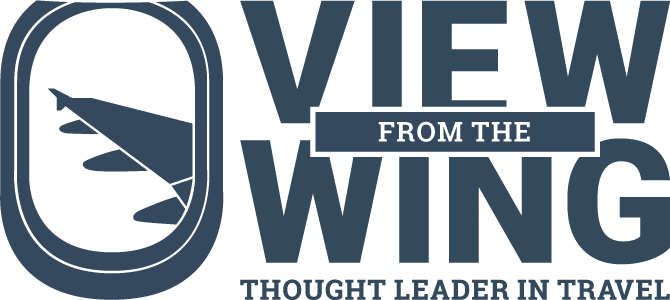

Reading that made me think that AA still doesn’t have the fundamentals right. They’re trying to improve their international J product and lounges, but at the same time have the highest involuntary denied boarding rate in the country, and rank last in mishandled bags. And I’m not sure those are even areas they are investing in fixing at this point.
Richard Anderson, you mean, the guy who went from airplanes to choochoos, that Richard Anderson?
I always love it when the company that believes it is sitting at the top of the food chain in an industry thinks no one can catch it. 20 years ago, DL was a crap airline, running a crap operation with some of the nastiest people in the industry. It took a lot of time, focus, bankruptcy and a bailout or two, but DL turned things around, as UA is doing now. While DL is making smaller, incremental changes now, UA is moving in leaps and bounds to close the gap…and they will if they maintain focus.
DL’s hubris reminds me of players win other industries who thought they were untouchable: Sears, K-Mart, GM, Alta Vista…I could go on.
Patiently waiting for Mr Dunn to chime in. Why? I wish I knew.
wait until UA reports, Parker, and let’s see how much UA has caught up.
They regularly have fans on the internet telling us that they fly more capacity and generate more revenue flying passengers but fail to mention how badly UA has failed to move the ball forward on profits relative to DL, esp. considering that UA has multiple labor groups that do not have current contracts.
UA’s labor cost benefit right now is in the hundreds of millions if not a half billion per year – even before profit sharing.
UA has made great progress but when they have a route announcement that includes a huge amount of domestic MAX aircraft on TATL routes, they aren’t really committed to premium revenue which is what they say they are after – and DL IS achieving.
and, yes, Richard Anderson did put lots of pieces together – none of which were earth-shattering but few companies really succeed long-term on new innovations but great execution.
DL has led the industry in execution for a couple decades – and the market rewarded them today for their superior execution.
@Parker — Shots fired! I had to double-check that it was @MaxPower or @JL writing that. What you described has not been my experience, but, I hope that Delta isn’t taking anything for granted.
@MIAZiggy — Our pal, Tim, should have a rebuttal, soon enough. Believe!
Interesting for sure although Delta’s unceasing dedication to the destruction of their loyalty program is what changed me from a fervent loyalist to someone who will only fly them when no other viable choice exists. Perhaps that makes me a rarity but I suspect that there must be some others who feel the same.
Bahahaha! @Parker sounds like the angry, disgruntled employee calling the HR line! There’s a reason Delta is only making smaller incremental moves right now and UA is making much bigger, bolder moves ….. It’s because they have to! Delta already has their model “dialed in”. They know who their customer is and the value of premium product segmentation. Most other carriers are still trying to decide who they want to be when they grow up.
It’s never about hubris, it’s about knowing the score of the game and where your chess pieces are on the board.
After all this analysis, ask a passenger. What airline do you want to fly? Ask me and Delta is high but not at the top. Alaska and United are above Delta but Delta is above American, Southwest, and JetBlue. Southwest used to be about equal to Delta but it isn’t with free checked bags going away.
derek,
with all due respect, your anecdotes mean nothing and that is true for every airline.
Data speaks for how people choose to spend their money; DL simply has figured out how to run a better business for a longer period of time than any other US airline except for WN – and strangely, DL took WN’s place as the best-run airline.
DL execs highlighted once again that they get more corporate revenue than any other airline. AA execs had a good chance of vying w/ DL for the title but they couldn’t execute on a remotely pleasurable airline for passengers.
UA, OTOH, has been fixated w/ flying to off-the-wall international destinations because they THINK that it generates a better value to their loyalty program than flying to BORING US destinations – and yet UA’s loyalty program value trails DL’s by leaps and bounds.
The tail of the tape is how companies succeed at their goals; DL is at or near the top of the US industry operationally and financially. Everyone else is just trying to play catch up.
Joe Delta is right. Everyone else is trying to figure out by swinging at the fences what DL has figured out and continues to execute far better than anyone else.
Anderson emphasized maintenance and reliability, not TV screens. It seems that most of Delta’s top management post-merger came from Northwest, not Delta, guess that makes Northwest the world’s only PERFECT Arline. LOL
“ …safe, clean, on time, with bags, and courteous service.”
This is why I made Delta my first choice for my business travel. They have largely in my experience delivered on that. So I continue to fly them and and willing to pay a premium to do so.
Anderson led not one but two airlines on the verge of (Northwest) or into (Delta) bankruptcy; Both airlines had ancient fleets; NWA fleet avg exceeded 18 years(!) when it was absorbed in 2008.
Of course the cost to operate those “paid for” old DC-9’s was less than $2K per block hour then, which explains why this similar approach to fly 30+ year old planes also extended to Delta with its 757s & 767s. One 757 (N658DL) is over 35 years old and was delivered when Eastern Airlines was still operating in 1990…
@Captain Freedom — That particularly old 757 is used for charters, so it’s more of an outlier. You’re not wrong, though, Delta and United each have some really old aircraft still operating. Even so, they’re safe to fly on, and have had new cabin interiors over the years. So, it’s not really all that bad. The irony is that American technically has the younger fleet among the ‘big three,’ since they scuttled their 767 and 757.
The arrogant dorito was able to survive RA’s departure on the basis of institutional inertia and Gil West. Now that both of those factors have been removed, dulltuh has a middling operation, unfriendly gate agents, uninformed rez line agents, a subpar premium product (outside of lounges), and virtually nonexistent elite recognition. 2008 awful terrible dulltah is rearing its head and about to reemerge.
Freedom,
DL’s fleet was not old at the time of the merger and it was because of the leveraged buyout that NW had to hold onto old airplanes – so NW figured out how to keep old aircraft active.
It is notable that DL does not have the oldest fleet among US airlines – UA does. DL not only retired 777s and 767s during the pandemic but has been retiring 767s for the past several years and apparently wants to have the whole 767-300ER fleet gone sooner than originally planned.
Rumors continue to circulate about either a 787 order or some more 330-900s. DL has recently taken delivery of the last of the 330NEOs it had on order and has about 6 remaining 359s plus the 20 firm order 350-1000s plus 20 more options.
So, DL has to order more new widebodies and is generating the cash to buy them.
And DL also noted on its earnings call that revenues from DL’s contract maintenance operation (Delta Tech Ops) were up 60% for the quarter which is an indication that the parts shortages are easing. They also noted that cargo revenues were up double digits, likely because of moving nearly all TPAC flights to 350s which have much better cargo capabilities.
and, Ghost,
most of DL’s senior mgmt is not from NW any longer; they are largely from other airlines or even more from outside the industry.
NW did a great job w/ what it had but DL’s success came from taking from NW’s successes as well as DL’s home-grown ideas plus those from others (including domestic AVOD from B6) and executing better than any other airline, including NW itself.
@Joe Delta I have no disgruntled feelings about DL whatsoever. I merely call strikes and balls as I see them. Every one of my statements are based on fact. DL was a mess 20 years ago..I have been flying with them long enough to remember. They did go through a BK and they did accept a government bailout. And the corporate graveyard is littered with companies who thought no one could ever catch them. Sorry, I’m not all milk and honey when people are trying to blow smoke up my a@@.
@Tim Dunn there seems to be an overly slanted viewpoint here on what constitutes a successful company from you and it always seems to be the viewpoint that favors DL. I really don’t care where DL or UA were. I care where they are going. UA is on an upswing in terms of operational performance, customer satisfaction, employee attitude (not morale), hard product, soft product. As I see it (and, yes, I know you disagree) DL has leveled off. They’re focused on optimizing their credit card relationship and loyalty benefit rollbacks at the expense of many other things, and there HAS been a noticeable slip in operational performance and competitiveness of their in-flight product.
I am flying over the Atlantic next week on a DL 763…up front…and am dreading it. I would much rather fly on a 321XLR with lie-flat seats…but I had 750,000 SkyPesos burning a hole in my account because, you know, SkyPesos are such a value these days.
As I have said repeatedly, I am a fan of DL in many respects. There are a lot of things they do well. Their employees are still the best in the business. But, DL is far from perfect, and they are not untouchable. There was a time when AA was the airline to beat, and look where they are now. If I were Kirby I would cheer DL on and encourage them to focus on how amazing they think they are while I catch up.
The only thing Delta about Delta today is the name and the headquarters location. Everything else that’s made it successful is Northwest through and through (and if you read the interview, it confirms that). It’s the Minnesota work ethic, high expectations, and belief in the common good. When NW and DL were both in bankruptcy, both states gave them bailouts… but Georgia was smarter and made the money contingent on the name and the HQ remaining there. Everything else about that consolidation was NW taking over and running the show. And we’re better off for that.
Delta’s super-high profits are a clear sign of complacency and over-confidence. If Delta was serious about maintaining their leadership position long-term, they would be reinvesting some of those profits into their product to improve their chances of maintaining a lead over the competition.
When I flew weekly on business, I became a Northwest loyalist. I became a Delta loyalist by default, after DL bought NW. I now only travel for pleasure and not as frequently as I used to. I have experienced how great the Delta SkyMiles program uses to be ) particularly at the Diamond level, at its inception. I have also experienced how Delta has led the race to the bottom in terms of its loyalty program. These days, I certainly don’t hate Delta but I mostly try to choose nonstop flights that are convenient for me and reasonably priced. I am fortunate to live in an area with a lot of flight and carrier choices.
Many other consumers are not so fortunate, even in very populated areas. I suspect that as far as profits from actual flight operations go, a large percentage comes from DL’s fortress hubs, 2 of which came from NW: ATL, DTW, MSP, and SLC, where DL enjoys market shares verging on a monopoly. That is often very bad fare news for flyers based near those airports. DL also has much smaller market shares at JFK and LAX, but at those 2 airports, it’s still enough to have the largest market share–and those 2 metro areas have a lot of premium traffic. As Gary pointed out in a separate post, they also drive a lot of co-branded credit card spend.
In my own experience, even recently, I still think DL has great employees. They seem happy, friendly, and not rude. Despite the comments of others, I think Delta’s employees are its greatest asset, especially in an era when loyalty means so much less than it used to.
@Parker — You should still look forward to your trip!
Up-front on DL’s 763 for a TATL redeye is still better than in the back; and it’s far better than many other carriers (I’d prefer Delta over Air Europa, or Icelandair and Azores, which don’t even have lie-flat for their Business Class).
If you’re flying from JFK or BOS, I think you’ll still enjoy the D1 lounges there; if not, next time, try to route through there, if you can.
As to Sky Pesos, I’m not sure whether 700K was good value for the particular route, but, let’s say, the tickets were $7,500, then, at least you broke-even. I wouldn’t have burned mine on that, but, you did seem to hoard points there, so better to use than lose (I know, they don’t expire, but, still.)
Safe travel!
AA needs to “copy” DL (IMO) for the line maintenance.
But not on the old planes. I’m so glad DL got rid of those old trash MD-80 from ALB-ATL. Having porta-potty smells from the ancient bathrooms wafting into the F-cabin (not to mention everything else so old on them) was never fun. And even though DL has “updated’ interiors on their planes, the bathrooms are old and disgusting (I should’ve kept the pictures from my last few flights). Rust, TP holders broken, doors won’t close, etc.
Although AA with their ancient LUSAIR 319 (? I think) aren’t my favorite either.
I’m mixed on the seatback IFE. It’s nice except when it’s not –can’t rotate the screen enough in some cases (depends on the plane, but if the person in front of you fully reclines in F, you don’t have enough movement on the screen, IMO). PLUS you have the idiots that don’t understand “touch” screen. Entire 3 hour flight got to have some guy behind me mashing the screen (don’t know if he was playing a game or watching TV/movie and changing channels, etc.)
Yes I like to complain. Overall, I’d say DL seems to have better customer service if something goes wrong, and AA at the bottom, IMO. As for service in air, I’m about 50/50 with PDB with AA and DL, (UA being at the top, so far), but YMMV.
However, the most surly FA I ever had was on AA (last year). And she was like that with everyone in the F cabin. NO PDB and would stand a row ahead and ask you what you wanted once in the air, but then she’d get mad because she couldn’t hear you because she’s one row up. Never cracked a smile once. To anyone. Maybe she was having a bad day, I’m not sure.
In the end, I choose based upon a combination of cost, itinerary, and if I have my DL Amex Companion cert that’s useable.
IVB are very rare and will likely never impact a flyer. I think the last time I saw an IVB was back in 2015 on an AA LAX/LAS flight.
What really impacts all flyers is reliability and communication. Much of the former is out of the airline’s hand but the latter is not. Also, the former can be made better by a good execution of a recovery plan.
@George Nathan Romey — They’re all reliable and ‘communicative’ until they aren’t… IROPS can make the best airline look like the worst airline. I will say, but for Crowdstrike, Delta does alright (and, even then, they ‘made it better’ when they reimbursed me for alternative transportation, though, it took a little while to resolve. I got over it.) Within SkyTeam, I’d say, for reliability, KLM has saved me more than a few times, when others failed.
@mjonis — Epic rant. (Not even kidding, I genuinely enjoyed it.) Yeah, DL’s got some oldies (but they’re still ‘goodies.’) Like, I’d take DL’s aging 717 or a319 over UA’s ancient 737-700 (mostly because the 717 has 2-3 configuration, the ‘2’ of which is nice for couples in Economy, and the a319 has IFE and free Wifi for SkyMiles members, whereas, UA often doesn’t include either). You do you, though.
As to the DL Amex Companion Certificates, that’s a real shame for you, and I wonder how much of it is where you are based, because from NYC, I see plenty of availability all over North America, since they ‘enhanced’ the Delta Reserve ‘First’ Companion Certs. Do you have the Platinum Delta instead? Maybe those ‘Main’ Companion Certs are more restrictive. Anyhoo…
Lance,
Anderson has been gone from the CEO position at DL for almost a decade; while NW strategies heavily influenced decisions shortly after the merger, DL has made far more decisions that are unique to DL or were not derived from NW over the past decade.
DL leg the big 4 in seatback AVOD and WiFi: DL was the first with a Suite product among the US big 3. DL closed MEM and CVG and significantly cut RJ flying to levels far below what NW had or any of AA, AS or UA have now.
The 717 is essentially a replacement for RJs, esp. 50 seaters – and it is far better product on that basis.
DL danced w/ Bombardier and got the A220 at very low prices and the A220 is the replacement for long hub based large RJ flights compared to AA and UA. The A220 is simply a far better product than the Ejets.
The larger story is that DL has successfully integrated more airlines – either by merger or asset acquisition – than any other US airline. DL’s network still has strong indications of the NW merger but also the Pan Am asset acquisition, and the Western and Northeast mergers – all of which DL has built on more than what those airlines had at the time.
The last DL merger that has little imprint on what DL is today is the Chicago and Southern merger – which was 70 years ago.
as a 10 year Diamond and 2x 360 Skymiles member.. yes, delta is the best of the bad. The pricing is completely out of line with competitors. Sure the product is more timely – the FA’s are too often inattentive and barely do the minimum.
Most of my flights are JFK – MXP, i now choose to fly Emirates, better equipment, better service and amenities and a lower price. My skymiles program has been stripped of value, i feel no loyalty from Delta, so i’ll be loyal to myself.
Realistically Delta has become a division of Amex that happens to fly airplanes. In my experience, they like most wall street darlings have lost sight of what the original vision was. Bastian might be a hero to shareholders, but he has failed his customer.
So here’s how Delta is “winning” tonight in ATL. Took me four SkyClubs to find one that offered both seating AND had not run out of food. Completed BS. Keep climbing, Delta.
If UA ever hubs FLL my days with DL are over.
Parker,
you do realize there was a ground stop in ATL this afternoon due to a supposed gas leak?
Thanks for the report…very good, indeed. Some associations and marriages have good and lasting results… they are where the pros outweigh the cons…
@Lance, “Everything else about that consolidation was NW taking over and running the show.”
You are correct. And I would add to this (as one DL employee said)” We bought you with your money”……
UNBELIEVABLE!!